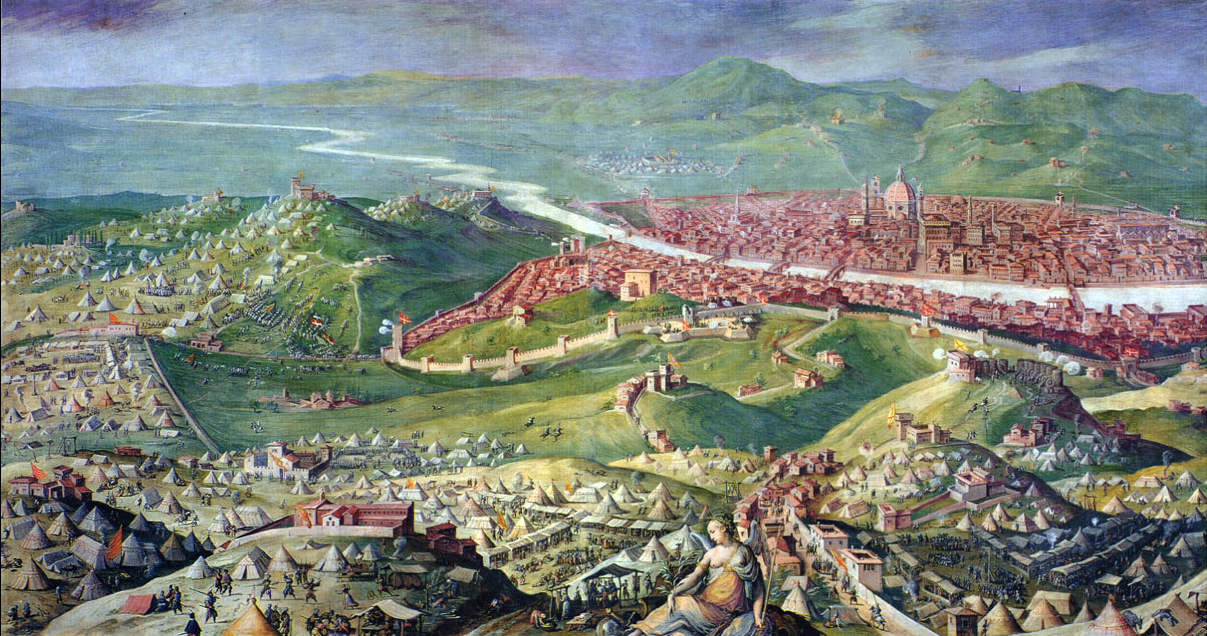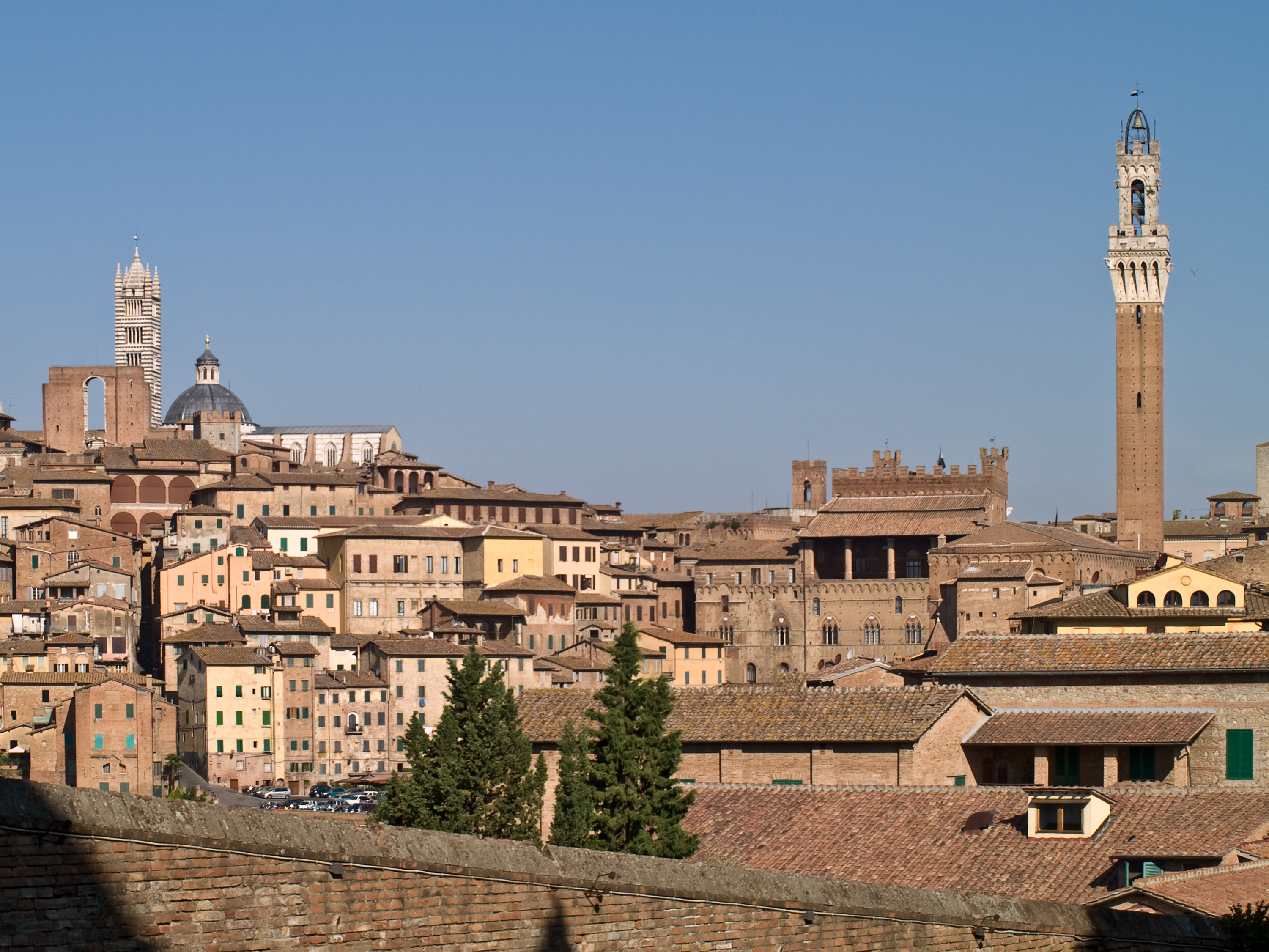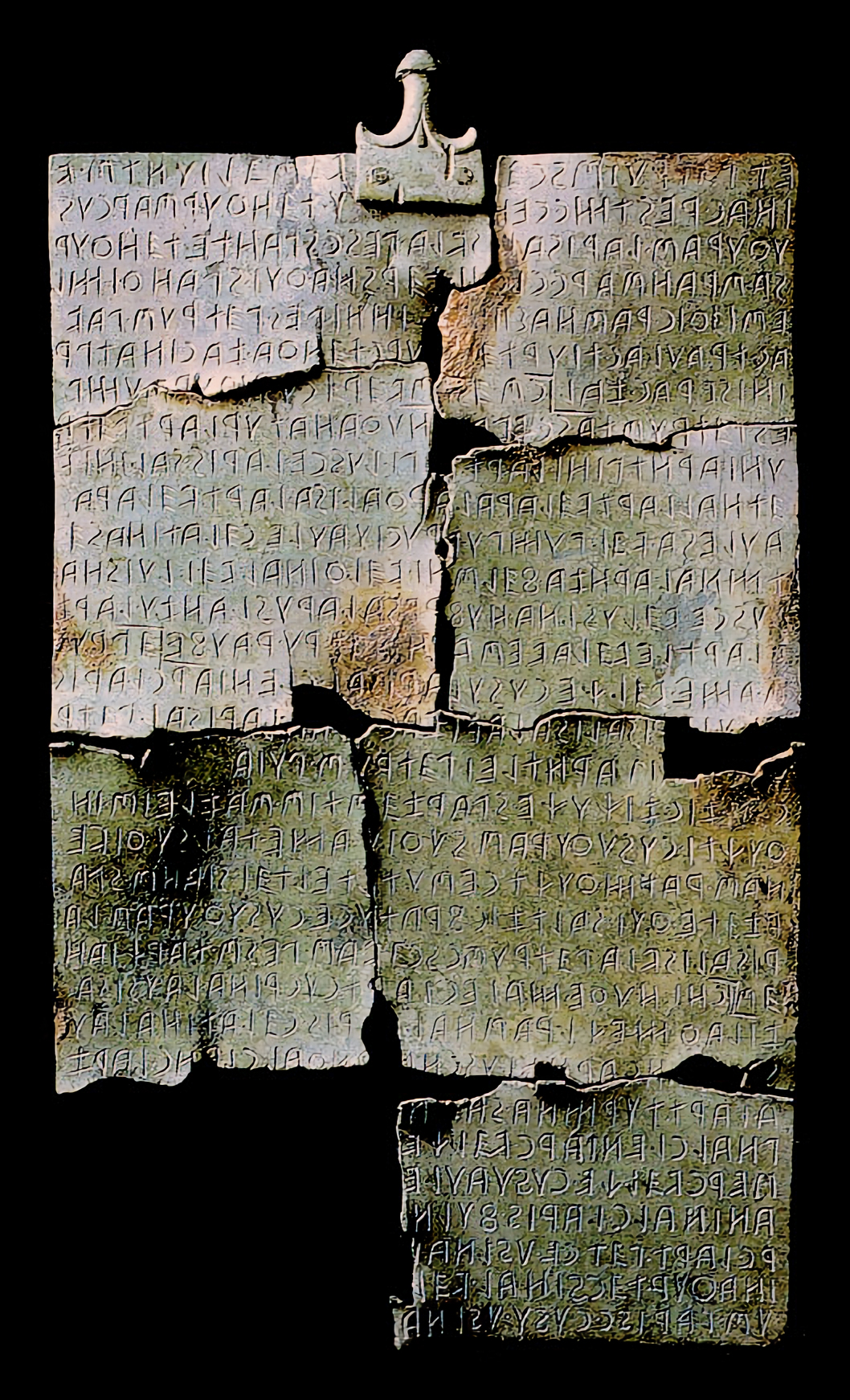|
Pasquino Corso
Pasquino Corso, also known as Pasquino da Perugia or Pasquino di Sia (died 15 July 1532) was a Corsican Condottiero (mercenary warlord) active during the Italian Wars which took place during the first half of the 16th century. Life Pasquino Corso was native to Ota, a Corsican village belonging to the pieve of Sia, and not to Perugia, as it is written in some contemporary sources. Apart from the dispute about his birthplace, nothing is known about his life until 1514. In August of that year he participated, on the orders of Renzo da Ceri, a ''condottiero'' fighting for Venice, in the battle of Ombriano near Crema, which took place for the possession of this besieged Lombard city, between the Spaniards and Sforzas on the one side and the Venetians and Frenchmen, eventually winners, on the other side. Afterwards, until 1526 he served under the Black Bands, organized by the condottiero Giovanni dalle Bande Nere. In June of 1526 Corso moved to Siena which he tried to conquer by ... [...More Info...] [...Related Items...] OR: [Wikipedia] [Google] [Baidu] |
Corsican People
The Corsicans ( Corsican, Italian and Ligurian: ''Corsi''; French: ''Corses'') are a Romance ethnic group. They are native to Corsica, a Mediterranean island and a territorial collectivity of France. Origin The island was populated since the Mesolithic (''Dame de Bonifacio'') and the Neolithic by people who came from the Italian peninsula, especially the modern regions of Tuscany and Liguria. An important megalithic tradition developed locally since the 4th millennium BC. Reached, like Sardinia, by Polada culture influences in the Early Bronze Age, in the 2nd millennium BC Corsica, the southern part in particular, saw the rise of the Torrean civilization, strongly linked to the Nuragic civilization. The modern Corsicans are named after an ancient people known by the Romans as '' Corsi''. The ''Corsi'', who gave their name to the island, actually originated from the Northeastern part of Nuragic Sardinia ( Gallura). According to Ptolemy, the Corsi were formed by a c ... [...More Info...] [...Related Items...] OR: [Wikipedia] [Google] [Baidu] |
Siena
Siena ( , ; lat, Sena Iulia) is a city in Tuscany, Italy. It is the capital of the province of Siena. The city is historically linked to commercial and banking activities, having been a major banking center until the 13th and 14th centuries. Siena is also home to the oldest bank in the world, the Monte dei Paschi bank, which has been operating continuously since 1472. Several significant Renaissance painters worked and were born in Siena, among them Duccio, Ambrogio Lorenzetti, Simone Martini and Sassetta, and influenced the course of Italian and European art. The University of Siena, originally called ''Studium Senese'', was founded in 1240, making it one of the oldest universities in continuous operation in the world. Siena was one of the most important cities in medieval Europe, and its historic centre is a UNESCO World Heritage Site. From January until the end of September of 2021 it had about 217,000 arrivals, with the largest numbers of foreign visitors com ... [...More Info...] [...Related Items...] OR: [Wikipedia] [Google] [Baidu] |
Plague (disease)
Plague is an infectious disease caused by the bacterium ''Yersinia pestis ''Yersinia pestis'' (''Y. pestis''; formerly '' Pasteurella pestis'') is a gram-negative, non-motile, coccobacillus bacterium without spores that is related to both '' Yersinia pseudotuberculosis'' and '' Yersinia enterocolitica''. It is a facu ...''. Symptoms include fever, weakness and headache. Usually this begins one to seven days after exposure. There are three forms of plague, each affecting a different part of the body and causing associated symptoms. Pneumonic plague infects the lungs, causing shortness of breath, coughing and chest pain; bubonic plague affects the lymph nodes, making them swell; and septicemic plague infects the blood and can cause tissues to necrosis, turn black and die. The bubonic and septicemic forms are generally spread by flea bites or handling an infected animal, whereas pneumonic plague is generally spread between people Airborne disease, through the air via infectio ... [...More Info...] [...Related Items...] OR: [Wikipedia] [Google] [Baidu] |
Epidemic
An epidemic (from Greek ἐπί ''epi'' "upon or above" and δῆμος ''demos'' "people") is the rapid spread of disease to a large number of patients among a given population within an area in a short period of time. Epidemics of infectious diseases are generally caused by several factors including a significant change in the ecology of the areal population (e.g., increased stress maybe additional reason or increase in the density of a vector species), the introduction of an emerging pathogen to an areal population (by movement of pathogen or host) or an unexpected genetic change that is in the pathogen reservoir. Generally, epidemics concerns with the patterns of infectious disease spread. An epidemic may occur when host immunity to either an established pathogen or newly emerging novel pathogen is suddenly reduced below that found in the endemic equilibrium and the transmission threshold is exceeded. For example, in meningococcal infections, an attack rate in excess of 15 c ... [...More Info...] [...Related Items...] OR: [Wikipedia] [Google] [Baidu] |
Venafro
Venafro (Latin: ''Venafrum''; Greek: ) is a ''comune'' in the province of Isernia, region of Molise, Italy. It has a population of 11,079, having expanded quickly in the post-war period. Geography Situated at the foot of Mount Santa Croce, elevation above sea level, at a height of above sea level, the elevation of the municipal territory varies from above sea level. The municipality stretches along the homonymous plain crossed by the Volturno and San Bartolomeo rivers whose sources are located in the center of the Venafro plain. Other notable mountains are: Monte Sambucaro at , Monte Cesima at , Monte Corno at , Monte Santa Croce or Cerino, at , and Colle San Domenico at .John Murray, A handbook for travelers in southern Italy. Edition 5. Publisher J. Murray, 1865 Once a part of the province of Terra di Lavoro in Campania (territory with which it is still culturally linked), the city is now known as the door of Molise and is of major importance to the socio-economic dynamics o ... [...More Info...] [...Related Items...] OR: [Wikipedia] [Google] [Baidu] |
Cortona
Cortona (, ) is a town and ''comune'' in the province of Arezzo, in Tuscany, Italy. It is the main cultural and artistic centre of the Val di Chiana after Arezzo. Toponymy Cortona is derived from Latin Cortōna, and from Etruscan 𐌂𐌖𐌓𐌕𐌖𐌍 (curtun). This may be related to Indo-European *ghortos meaning "enclosed place" and consequently walled city like Latin hortus, German Garten, Italian orto, English yard, and Slavic grad. The name may also be linked to the Phrygian town of Gordium in Anatolia, although the founding myth for the latter is that it was named after founder, King Gordias. However, the Etruscan language is probably a pre-Indo-European language, and therefore if it was named by the Etruscans, an Indo-European etymology is uncertain. The Umbrian language, by contrast, is an Italic language, so if it was named by them, a link to Indo-European roots would be more likely. George Dennis suggests that it was known by many names "Corytus, Croton, Croto ... [...More Info...] [...Related Items...] OR: [Wikipedia] [Google] [Baidu] |
Signore
A signoria () was the governing authority in many of the Italian city states during the Medieval and Renaissance periods. The word signoria comes from ''signore'' , or " lord"; an abstract noun meaning (roughly) "government; governing authority; de facto sovereignty; lordship"; plural: ''signorie''. Signoria versus the commune In Italian history the rise of the signoria is a phase often associated with the decline of the medieval commune system of government and the rise of the dynastic state. In this context the word ''signoria'' (here to be understood as "lordly power") is used in opposition to the institution of the commune or city republic. Contemporary observers and modern historians see the rise of the signoria as a reaction to the failure of the ''communi'' to maintain law-and-order and suppress party strife and civil discord. In the anarchic conditions that often prevailed in medieval Italian city-states, people looked to strong men to restore order and disarm the f ... [...More Info...] [...Related Items...] OR: [Wikipedia] [Google] [Baidu] |
Malatesta IV Baglioni
Malatesta IV Baglioni (1491 – 24 December 1531) was an Italian condottiero and lord of Perugia, Bettona, Spello and other lands in Umbria. Biography He was the son of Gian Paolo Baglioni, ruler of Perugia, and Ippolita Conti. He followed his father in his ventures from a very early age, and at fifteen he was count of Bettona. Later, in the course of the Italian Wars, he served the Republic of Venice, capturing Lodi and Cremona. In 1527 he was able to obtain the seignory of Perugia, after eliminating his brother and his uncle. During the War of the League of Cognac, Malatesta left Perugia to Philibert of Orange, chief of the Imperial army in Italy, to assume the defence of the Republic of Florence. A secret agreement with Pope Clement VII Pope Clement VII ( la, Clemens VII; it, Clemente VII; born Giulio de' Medici; 26 May 1478 – 25 September 1534) was head of the Catholic Church and ruler of the Papal States from 19 November 1523 to his death on 25 September 1534 ... [...More Info...] [...Related Items...] OR: [Wikipedia] [Google] [Baidu] |
Charles V, Holy Roman Emperor
Charles V, french: Charles Quint, it, Carlo V, nl, Karel V, ca, Carles V, la, Carolus V (24 February 1500 – 21 September 1558) was Holy Roman Emperor and Archduke of Austria from 1519 to 1556, King of Spain ( Castile and Aragon) from 1516 to 1556, and Lord of the Netherlands as titular Duke of Burgundy from 1506 to 1555. He was heir to and then head of the rising House of Habsburg during the first half of the 16th century, his dominions in Europe included the Holy Roman Empire, extending from Germany to northern Italy with direct rule over the Austrian hereditary lands and the Burgundian Low Countries, and Spain with its southern Italian possessions of Naples, Sicily, and Sardinia. He oversaw both the continuation of the long-lasting Spanish colonization of the Americas and the short-lived German colonization of the Americas. The personal union of the European and American territories of Charles V was the first collection of realms labelled " the empire ... [...More Info...] [...Related Items...] OR: [Wikipedia] [Google] [Baidu] |
Siege Of Florence (1529–30)
Siege of Florence may refer to: * Siege of Florence (405), part of the barbarian invasion of the Roman Empire * Siege of Florence (1312), part of the Wars of the Guelphs and Ghibellines * Siege of Florence (1529–1530) The siege of Florence took place from 24 October 1529 to 10 August 1530, at the end of the War of the League of Cognac. At the Congress of Bologna, the Medici Pope Clement VII and Emperor Charles V agreed to restore the Medici family in Flore ..., part of the War of the League of Cognac See also * History of Florence {{Disambig ... [...More Info...] [...Related Items...] OR: [Wikipedia] [Google] [Baidu] |
Florence
Florence ( ; it, Firenze ) is a city in Central Italy and the capital city of the Tuscany region. It is the most populated city in Tuscany, with 383,083 inhabitants in 2016, and over 1,520,000 in its metropolitan area.Bilancio demografico anno 2013, datISTAT/ref> Florence was a centre of medieval European trade and finance and one of the wealthiest cities of that era. It is considered by many academics to have been the birthplace of the Renaissance, becoming a major artistic, cultural, commercial, political, economic and financial center. During this time, Florence rose to a position of enormous influence in Italy, Europe, and beyond. Its turbulent political history includes periods of rule by the powerful Medici family and numerous religious and republican revolutions. From 1865 to 1871 the city served as the capital of the Kingdom of Italy (established in 1861). The Florentine dialect forms the base of Standard Italian and it became the language of culture throug ... [...More Info...] [...Related Items...] OR: [Wikipedia] [Google] [Baidu] |
Holy Roman Empire
The Holy Roman Empire was a political entity in Western, Central, and Southern Europe that developed during the Early Middle Ages and continued until its dissolution in 1806 during the Napoleonic Wars. From the accession of Otto I in 962 until the twelfth century, the Empire was the most powerful monarchy in Europe. Andrew Holt characterizes it as "perhaps the most powerful European state of the Middle Ages". The functioning of government depended on the harmonic cooperation (dubbed ''consensual rulership'' by Bernd Schneidmüller) between monarch and vassals but this harmony was disturbed during the Salian period. The empire reached the apex of territorial expansion and power under the House of Hohenstaufen in the mid-thirteenth century, but overextending led to partial collapse. On 25 December 800, Pope Leo III crowned the Frankish king Charlemagne as emperor, reviving the title in Western Europe, more than three centuries after the fall of the earlier ancient West ... [...More Info...] [...Related Items...] OR: [Wikipedia] [Google] [Baidu] |






